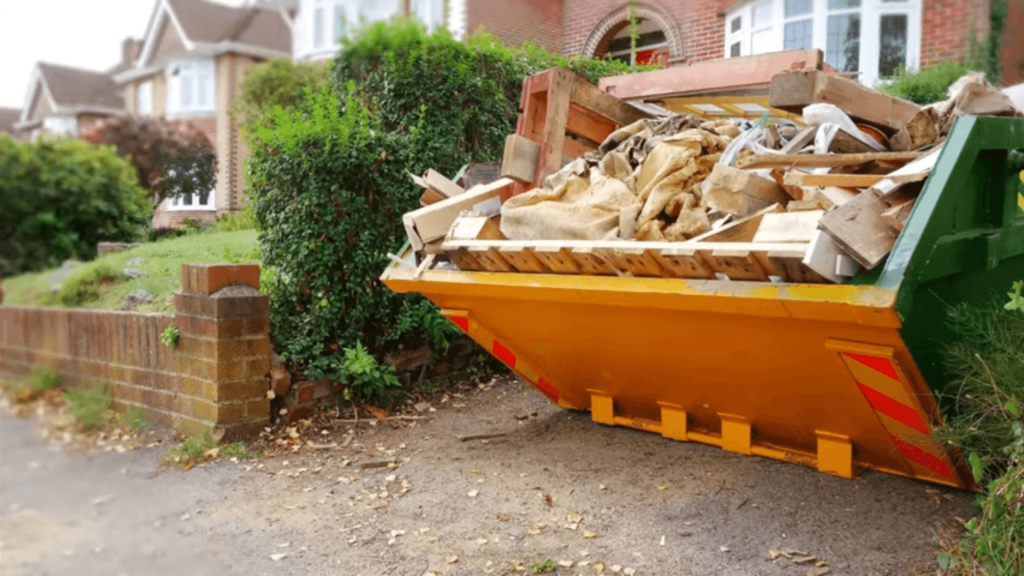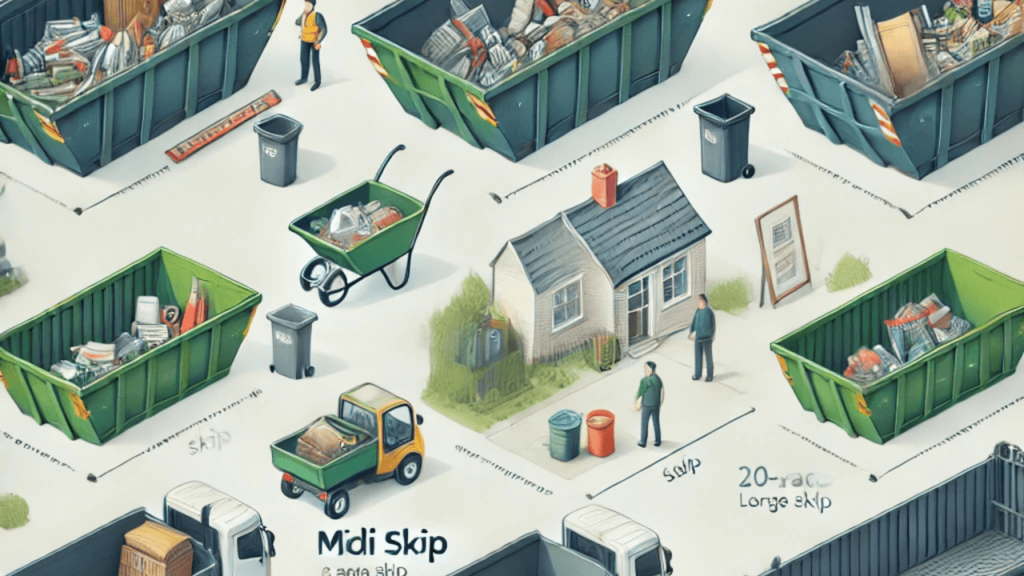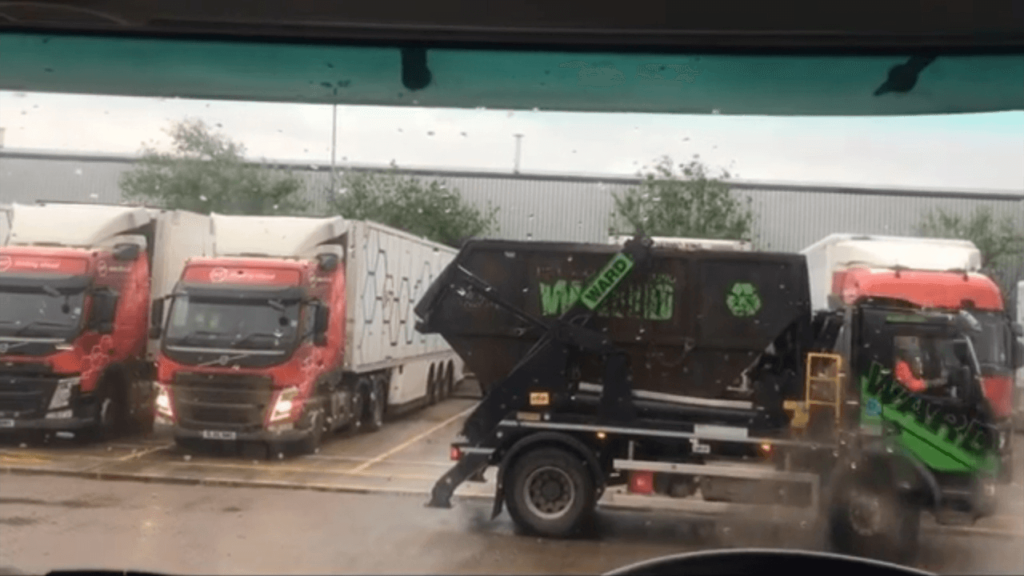Hiring a skip is an easy and convenient way to get rid of waste from home renovations, garden clean-ups, or business projects. However, not everything can go into a skip. Some materials are hazardous, while others require special disposal methods.
This guide will help you understand:
- What items can go into a skip
- What items can’t go into a skip
- Alternative disposal methods for restricted items
- Important legal and safety considerations
Let’s break it down.
✅ What Can You Put in a Skip?
Most general waste can go into a skip, including household rubbish, construction debris, and garden waste. Here’s a list of what is allowed:
1. Household Waste
You can dispose of everyday household waste, such as:
- Furniture – chairs, tables, sofas (without electrical components)
- Plastics – non-toxic plastic items like containers and packaging
- Paper & Cardboard – newspapers, magazines, and boxes
- Clothes & Textiles – old clothes, curtains, and soft furnishings
- General Rubbish – non-hazardous items from decluttering
2. Construction & Demolition Waste
Most construction waste is allowed, including:
- Bricks & Concrete – broken bricks, paving stones, and rubble
- Wood – timber, old doors, wooden flooring
- Metals – steel, aluminum, copper from pipes and frames
- Plasterboard (limited amounts) – some skip providers allow it if kept separate
- Tiles & Ceramics – bathroom/kitchen tiles, old sinks
3. Garden Waste
If you’re clearing a garden, you can put in:
- Grass & Leaves – lawn clippings, hedge trimmings
- Small Branches – cut-off branches and twigs
- Soil – in small amounts (check with your provider)
- Plants & Flowers – dead plants, flowers, and weeds
4. Non-Electrical Household Items
You can throw away:
- Mattresses (some providers charge extra)
- Carpets & Rugs
- Books & Magazines
❌ What Can’t You Put in a Skip?
Some items are banned from skips because they are dangerous, toxic, or require special handling.
1. Hazardous & Toxic Waste
These materials can cause harm to people and the environment:
- Asbestos – extremely hazardous and requires specialist disposal
- Paint & Paint Tins – unless completely empty
- Chemicals & Solvents – bleach, pesticides, or industrial chemicals
- Batteries – car batteries, lithium batteries, rechargeable batteries
- Gas Cylinders – full or empty, including propane and helium tanks
2. Electrical Appliances & Electronics (WEEE Waste)
The law requires special disposal for electrical waste, including:
- Fridges & Freezers – contain harmful gases
- Washing Machines & Dishwashers – electrical components need safe disposal
- TVs & Monitors – contain lead and other toxic elements
- Computers & Laptops – need recycling due to hazardous parts
- Microwaves & Toasters – part of the WEEE (Waste Electrical and Electronic Equipment) category
3. Medical & Biological Waste
Items that pose health risks should never go into a skip:
- Needles & Syringes – require special disposal
- Medicines & Pharmaceuticals – must be returned to pharmacies
- Dead Animals & Pet Waste – pose hygiene and health risks
4. Liquids & Flammable Materials
To prevent fires and contamination, you cannot dispose of:
- Petrol, Diesel & Oil – harmful to the environment
- Glue & Adhesives – some contain hazardous chemicals
- Solvents & Paint Thinners – highly flammable
- Pesticides & Herbicides – require special disposal
5. Large & Heavy Items
Certain large objects are restricted because they can damage the skip or make it too heavy:
- Car Tyres – require specialist recycling
- Railway Sleepers – chemically treated and hazardous
- Large Tree Stumps – too bulky and difficult to process
🛑 What Happens If You Put Banned Items in a Skip?
If you put prohibited waste in a skip, you may face:
- Extra charges – for sorting and disposal
- Refusal to collect – skip providers may refuse pick-up
- Legal action – fines for disposing of hazardous waste improperly
🏗️ Alternative Disposal Methods for Banned Items
✅ How to Dispose of Restricted Waste Properly
| Waste Type | Proper Disposal Method |
|---|---|
| Asbestos | Hire a licensed asbestos removal service |
| Paint & Chemicals | Take to a local hazardous waste facility |
| Batteries | Recycle at battery collection points |
| Electrical Items | WEEE recycling center or donation |
| Fridges & Freezers | Contact local council for collection |
| Car Tyres | Specialist tyre recycling center |
| Gas Cylinders | Return to supplier or recycling facility |
| Medical Waste | Dispose of via healthcare services |
| Oils & Petrol | Take to an oil recycling center |
💡 Skip Hire Tips for a Hassle-Free Experience
If you’re hiring a skip, follow these tips:
1. Choose the Right Size Skip
- Mini Skip (2-3 cubic yards) – for small home clearances
- Midi Skip (4-5 cubic yards) – for medium DIY projects
- Builders Skip (6-8 cubic yards) – for construction waste
- Large Skip (12-16 cubic yards) – for major renovation projects
2. Check Local Skip Regulations
- Some areas require permits for placing skips on public roads
- Contact your local council to confirm skip hire rules
3. Load the Skip Properly
- Break down bulky items – to save space
- Load heavy items first – for stability
- Do not overfill – skips must be level to be transported safely
4. Use a Professional Skip Hire Company
- Choose a licensed and reputable provider
- Confirm their waste disposal policies
- Ask about extra fees for restricted items
📌 Final Thoughts
Knowing what you can and can’t put in a skip helps you avoid fines, protects the environment, and ensures safe waste disposal.



